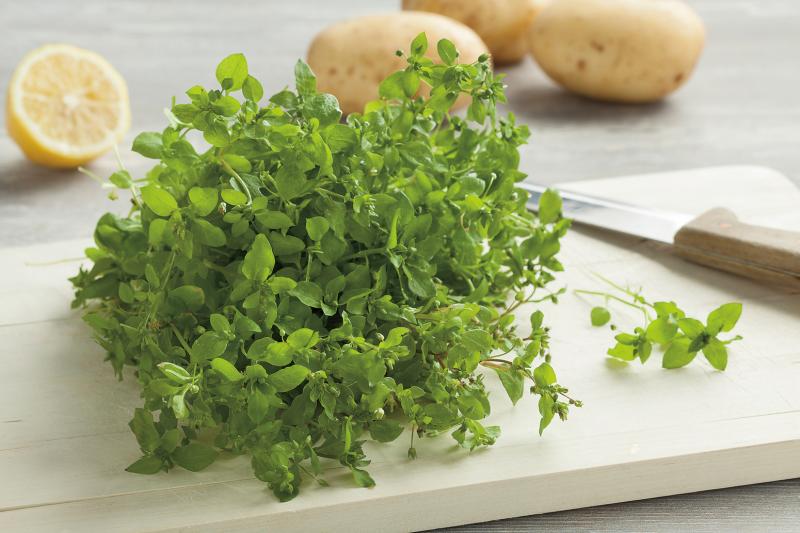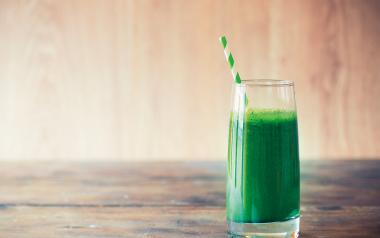Wild herbs are usually up long before annual greens are available from our local farmers. It seems almost as though Mother Nature planned that the first greens of spring popping up after the snow melts would be great cleansers. After a long winter of heavy foods our bodies can use some help resetting themselves. As a bonus, perennial wild herbs are more nutritionally dense than cultivated annuals, providing health-boosting trace minerals and phytonutrients. There’s also the added benefit of getting you outdoors in nature (or even just your own backyard) while you hunt for these nutritious morsels, and they're wonderful additions to summer salads! Let's meet some of these wild players!
Remember to always follow good foraging practices by respecting the plants and ensuring the quality of what you pick. Borrow a couple of plant identification books from the library to help you find these in your yard or wild spaces nearby.
Wild Crafting Wisdom
- Ask permission first and thank the plants for their generosity.
- Harvest only what you need and will use.
- Leave Grandmother (the biggest and best plants).
- If there are 20 plants its generally ok to harvest 1.
- Harvest 1/3 or less of an individual plant.
- Harvest with a clean cut so the plant will heal well.
- Avoid polluted areas.
- Never put anything in your mouth unless you are 100% sure.
- Taste test every time. Plants taste different at different times and places. Listen to your body’s response.
Cleavers
Galium aparine

Cleavers is a great spring detox plant because it is a diuretic that cleanses the lymphatic system and urinary tract. Its bitter properties strengthen the liver and cleanse the blood and intestines. Cleavers is also anti-inflammatory and lowers blood pressure.
This herb can be eaten fresh or steamed but is nicest in a cold infusion because of its ‘sticky’ nature. To make this, pack a jar full of rinsed cleaver stems and leaves and then fill the jar with filtered water. Let it sit on the counter overnight. Strain out the water in the morning and sip on it throughout the day (more than ½ a cup at a time may be too strong a diuretic so make it last!). It can also be made into a warm tea. The straight juice may cause contact dermatitis but could be mixed with other greens (and fruit) for a nutritive boost.
Harvest tips
Cleavers has little hooks all over the stem that make it stick to your clothing when you touch it but it is not difficult to remove. The leaves are gathered in whorls of 6-9 around the stem and there are small whitish flowers on stalks along the stem. Make a clean cut or break along the stem roughly a third of the way down, leaving enough growth below so that the plant can regenerate.
Dandelion
Taraxacum officinale

According to Katrina Blair, author of The Wild Wisdom of Weeds, dandelions have been used as a spring tonic since before the written word. They were used across Europe, Asia and the Middle East and then brought to this continent by settlers as precious food and medicine. Dandelion was quickly adopted as a useful medicine by various indigenous tribes in Canada and the United States and continues to be used today.
Dandelion is a more bitter green than the others here—an indication of its ability to tone our internal organs. Most of us could use a lot more bitters and less sweets in our diet. Even the vegetables and fruit we cultivate these days contain more sugars than in the past. Your palate will soon adjust to eating more wild foods by slowly increasing your intake. Personally, I have found that many commercial foods are overly sweet for me now that my palate has changed and I not only don’t crave them, but actually don’t enjoy them!
Dandelions also cleanse the blood, aid the digestion of proteins and fats, tone the internal organs, and assist with circulation. They stimulate the secretion of bile and can be used to treat liver imbalances. Dandelion is an excellent diuretic that helps to flush out toxins while at the same time increasing nutrient levels in the body (notably potassium, which can be depleted with other diuretics). Consuming dandelion fills us with trace minerals that can bind and replace metals that cause toxicity.
Harvest tips
The greens are best before the flowers bloom. Harvesting just the inner leaves of a rosette will give you a less bitter product as well. Add the fresh leaves to salads, smoothies, juices and pesto. If you are new to bitter foods, chop the leaves very finely and mix them in well with other greens so they don’t overpower your salad. There are different varieties with slightly different flavours so taste the leaves before harvesting in quantity to find the ones most palatable to you. Boiling for 5 to 8 minutes and then tossing with olive oil and lemon will remove a lot of the bitterness but you then lose some of the cleansing qualities that the bitter provides.
Chickweed
Stellaria media

Chickweed has a mild green taste and makes a delicious salad or juice. It can be used externally to tone the skin (used as a salve), and internally to remove excess toxins and reduce weight. Chickweed is a demulcent— soothing inflammation by forming a protective film over mucous membranes while simultaneously drawing out toxins to be eliminated! Eaten fresh, it can help to remove congestion and infection in the body. The fresh juice and tea from the leaves and stems help to eliminate gas and indigestion. The flowers and seeds may be eaten as well. Chickweed is high in vitamin C, iron, zinc and potassium and is a strong antioxidant.
Harvest tips
Chickweed spreads out as a ground cover when given the chance and seems to weave back and forth over itself into a big mass. It is available almost all year long—even peeping out green and strong from under snow cover. It takes off in the spring as soon as the temperatures are above freezing. At that time you can harvest the entire above ground portion for fresh eating or juicing. Later in the season it gets more fibrous and you will want to focus on the newer 1-2” of growth at the stem tips for salads. The older parts can be juiced. Each plant only lives 6-7 weeks and then it reseeds itself so make sure to leave some seed pods. Chickweed growth will slow down in dry hot weather but have another growth spurt in the cooler, wetter fall. Be careful not to confuse chickweed with Scarlet Pimpernel (Anagallis arvensis). Though it can also be used medicinally it is not as benign a plant. Chickweed has fine hairs on one side of the stem and a white flower. Mouse Ear Chickweed (Cerastium vulgatum) has hairs all over it and is therefore less palatable raw but can still be cooked or juiced.
I eagerly await the first edible greens of spring every year and it's probably when the largest proportion of our household diet is comprised of wild foods. That first chickweed green emerging in spring has become almost as exciting as the crocuses and daffodils that are close to follow. Hopefully it will for you too. Why not harvest an abundance of free, nutritious greens long before annual crops are ready and flush out all that internal gunk built up over the winter for a fresh and energetic start to the warm season!






